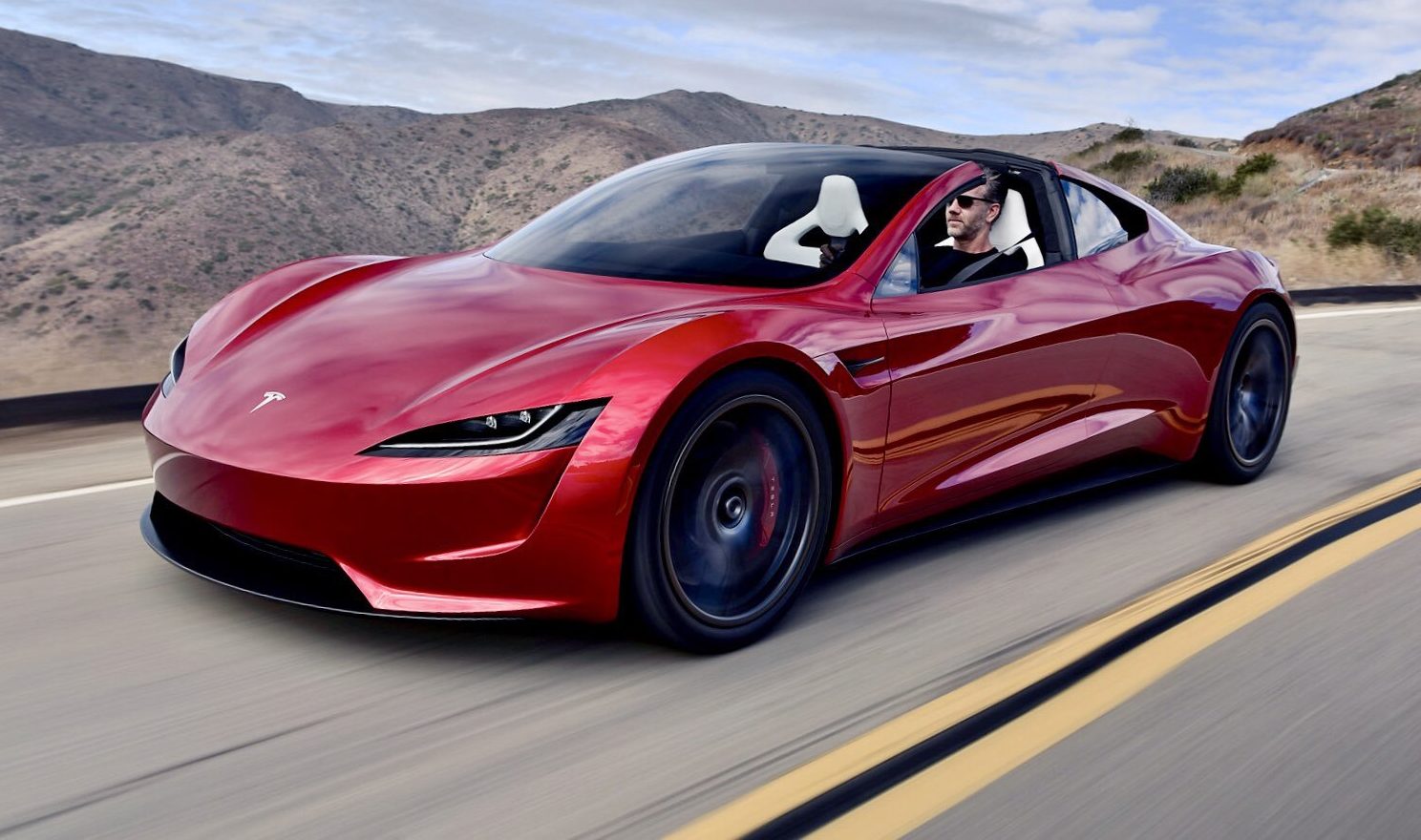
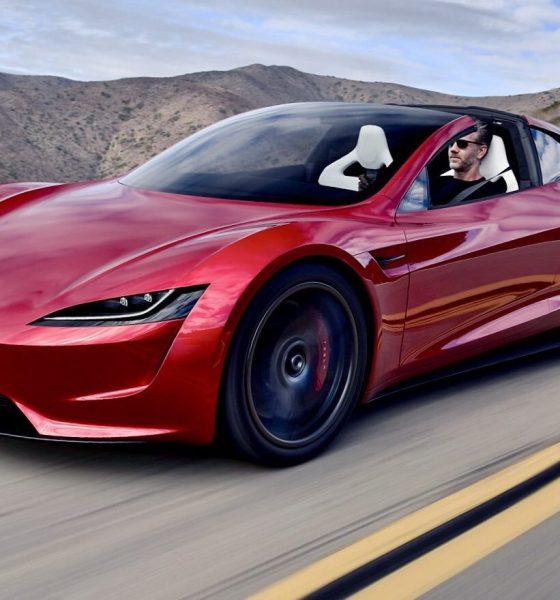
News
Tesla’s next-gen Roadster is ushering in the automotive industry’s ‘Megacar’ era
Elon Musk is a man driven by his limits. The man behind electric car maker Tesla, Musk has led the company from its small Silicon Valley startup days to its current status as a $50 billion automaker with a market cap that rivals that of Ford and GM. With each vehicle that Musk releases, Tesla disrupts an industry, and with the next-generation Roadster, the CEO is aiming to create a true halo car.
Christian von Koenigsegg is a man driven by his passion. The man behind the small, exclusive supercar company Koenigsegg, Christian is known for pushing the limits of the vehicles he releases. Koenigsegg might be far smaller than supercar makers like Ferrari and Lamborghini, but the few cars that it makes shake the automotive world. The Koenigsegg Agera RS, for one, currently holds the title as one of the fastest cars in the world after it reached speeds of 278 mph. The Koenigsegg One:1, named for its equal power-to-weight ratio, also packs 1,341 horsepower, or the equivalent of one megawatt of power. Koenigsegg’s cars are so powerful that some of them actually qualify as a hypercar instead of a supercar.
When Christian von Koenigsegg heard the specs of Tesla’s next-generation Roadster, his entire company’s roadmap for the coming years was shaken. In a recent statement to Top Gear, Koenigsegg admitted that his company was completely thrown off course by the listed specs of the all-electric supercar, even admitting that the experience itself was “frustrating.”
“We kind of had our future mapped out, and then we heard about the new Tesla Roadster and its insane acceleration numbers, and we thought ‘damn that’s put the gauntlet down.’ Sure, it must be really heavy, but that kind of acceleration? That’s frustrating!” he said.
https://www.instagram.com/p/BnDT8v1hKJH/?tagged=teslaroadster
Christian noted that one of the biggest revelations by the arrival of the next-generation Tesla Roadster was that Elon Musk’s quoted specs for the vehicle were actually possible. In order to respond to the arrival of an electric car designed to deliver a “hardcore smackdown” to gas-powered vehicles, Koenigsegg and his engineers came up with a strategy that would allow one of its cars to give the Roadster some good competition.
“We thought, ‘this is not OK.’ We wondered whether it was possible, and yeah, it’s possible. Then we thought, ‘OK how do we deal with it? This is embarrassing.’ In two days we’d thought of a few things. The simplest way of putting it is like this: it’s combining direct drive, with the hybridization we have in a different format with free-valve engine technology, in a peculiar layout,” he said.
The concept that Koenigsegg and his team came up with is pretty much the fossil fuel-powered counterpart of the next-generation Tesla Roadster — one that is beyond a hypercar, perhaps even a “megacar” of sorts. Christian noted that he was partly annoyed at himself, for “needing a kick in the head to start thinking” about improving his vehicles’ acceleration.
“We’re talking 0-250 mph in 14 seconds, or something like this. It’s like, black marks all the way up to 250 mph (400 kph), pushing the combustion engine into the wall to try to make it more power dense than an EV for as long as possible. What we see with our engines, we’ve noticed that we’re just scratching the surface of what we can achieve,” he said.
https://www.instagram.com/p/BnHiOO4FYQv/?taken-by=koenigseggnewportbeach
Elon Musk threw the gauntlet at legacy automakers when he unveiled the next-generation Tesla Roadster last year, and if Christian von Koenigsegg’s reaction to the vehicle is any indication, it appears that the all-electric supercar is doing precisely what it was intended for — it is forcing automakers to see electric cars as a formidable force, and it is driving them to adapt and come up with ways to make their vehicles even better and faster.
Interestingly, such a sentiment has been echoed by Tesla’s test driver for the next-generation Roadster, Emile Bouret, earlier this year. In a segment with YouTube’s VINwiki channel, Bouret, who drove the all-electric car the whole night during its unveiling, encouraged the auto community to support projects and vehicles like the next-generation Roadster, stating that the existence of such vehicles would affect the auto industry in a positive way as a whole.
“I love that I live in a world where all these cars exist. You have Koenigseggs and Paganis and Ferraris and Lamborghinis and McLarens and Porsches and Rimacs and Teslas. So, I know there’s a lot of hate out there, but I just don’t understand it. If you’re a car person, wouldn’t you root for everybody? I’m definitely rooting for them because the world will be a better place if that car does get built and it gets on the road because other people are gonna build cars to beat it — and we’re gonna win,” he said.
Considering that Koenigsegg appears to have come up with a solution to match the next-gen Roadster, it seems that Buoret’s words are coming true. As the Tesla Roadster and Koenigsegg’s upcoming vehicle are released to the market, the era of megacars could very well begin.

News
Tesla launches its new branded Supercharger for Business with first active station
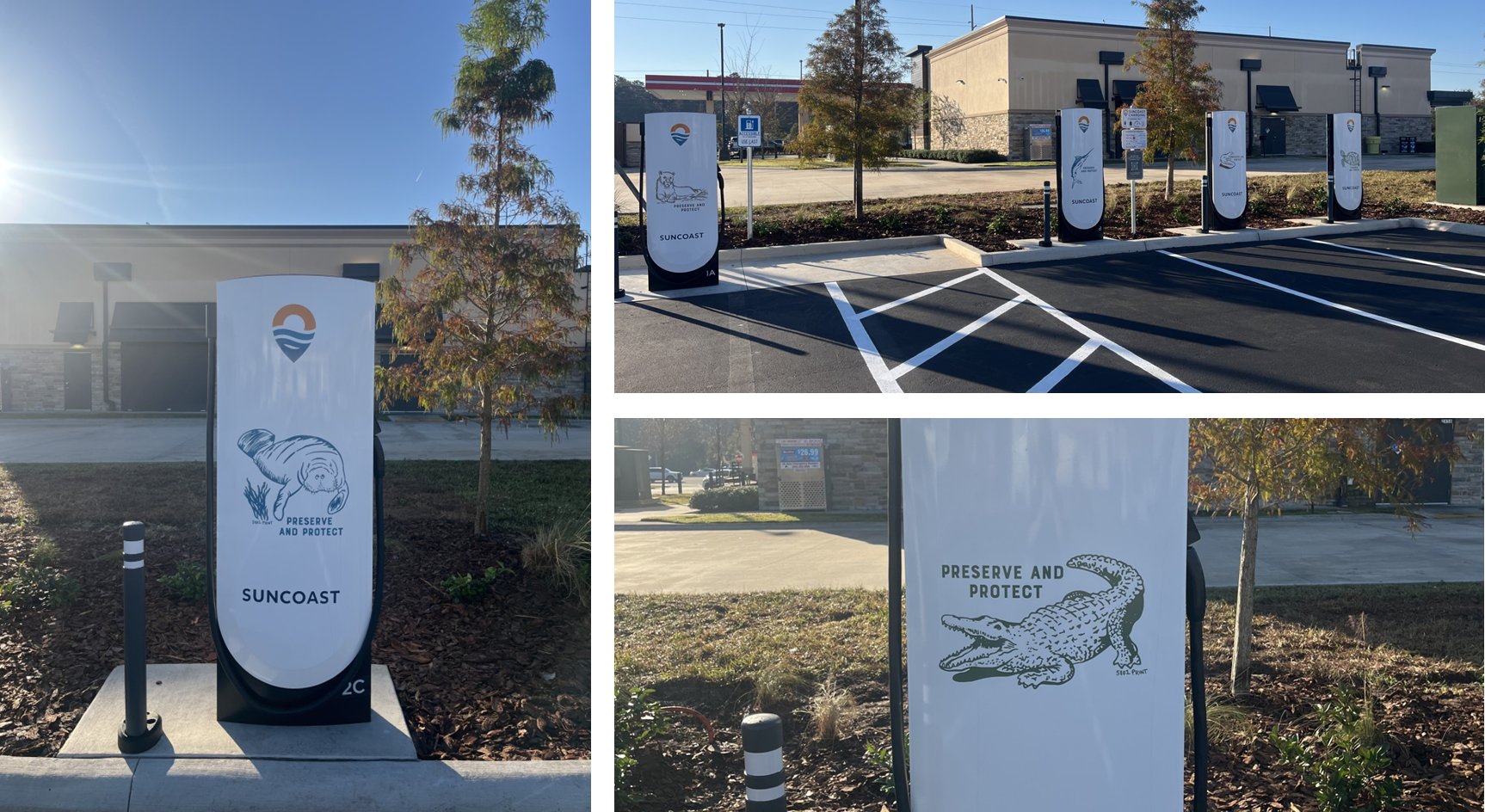
Tesla has officially launched its first branded Supercharger just months after initiating a new program that allows third-party companies to brand their own charging piles.
The site opened in Land O’ Lakes, Florida, and features eight V4 Supercharging stalls offering up to 325 kW of charging speed. It appears it was purchased by a company called Suncoast Credit Union. This particular branch is located Northeast of Tampa, which is on the Gulf of Mexico.
It features graphics of Florida animals, like alligators:
Here’s a video of the graphics being installed on the Tesla Superchargers at this site: https://t.co/oIfEPNZjAH pic.twitter.com/ENWakZ2qT9
— TESLARATI (@Teslarati) November 20, 2025
Tesla launched this program back in September, and it basically was a way to expand its Supercharger presence and also allow companies to pay for the infrastructure. Tesla maintains it. When it announced the “Supercharger for Business,” it said:
“Purchase and install Superchargers at your business. Superchargers are compatible with all electric vehicles, bringing EV drivers to your business by offering convenient, reliable charging.”
The program does a few things. Initially, it expands EV charging infrastructure and makes charging solutions more readily available for drivers. It can also attract people to those businesses specifically.
Tesla launches new Supercharger program that business owners will love
The chargers can also be branded with any logo that the business chooses, which makes them more personalized and also acts as an advertisement.
The best part is that the customers do not have to maintain anything about the Supercharger. Tesla still takes care of it and resolves any issues:
“We treat your site like we treat our sites. By providing you with a full-service package that includes network operations, preventative maintenance, and driver support, we’re able to guarantee 97% uptime–the highest in the industry.”
It appears the Superchargers will also appear within the in-car nav during routing, so they’ll be publicly available to anyone who needs to use them. They are still available to all EVs that have worked with Tesla to utilize its infrastructure, and they are not restricted to people who are only visiting the business.
Cybertruck
Tesla reveals its Cybertruck light bar installation fix
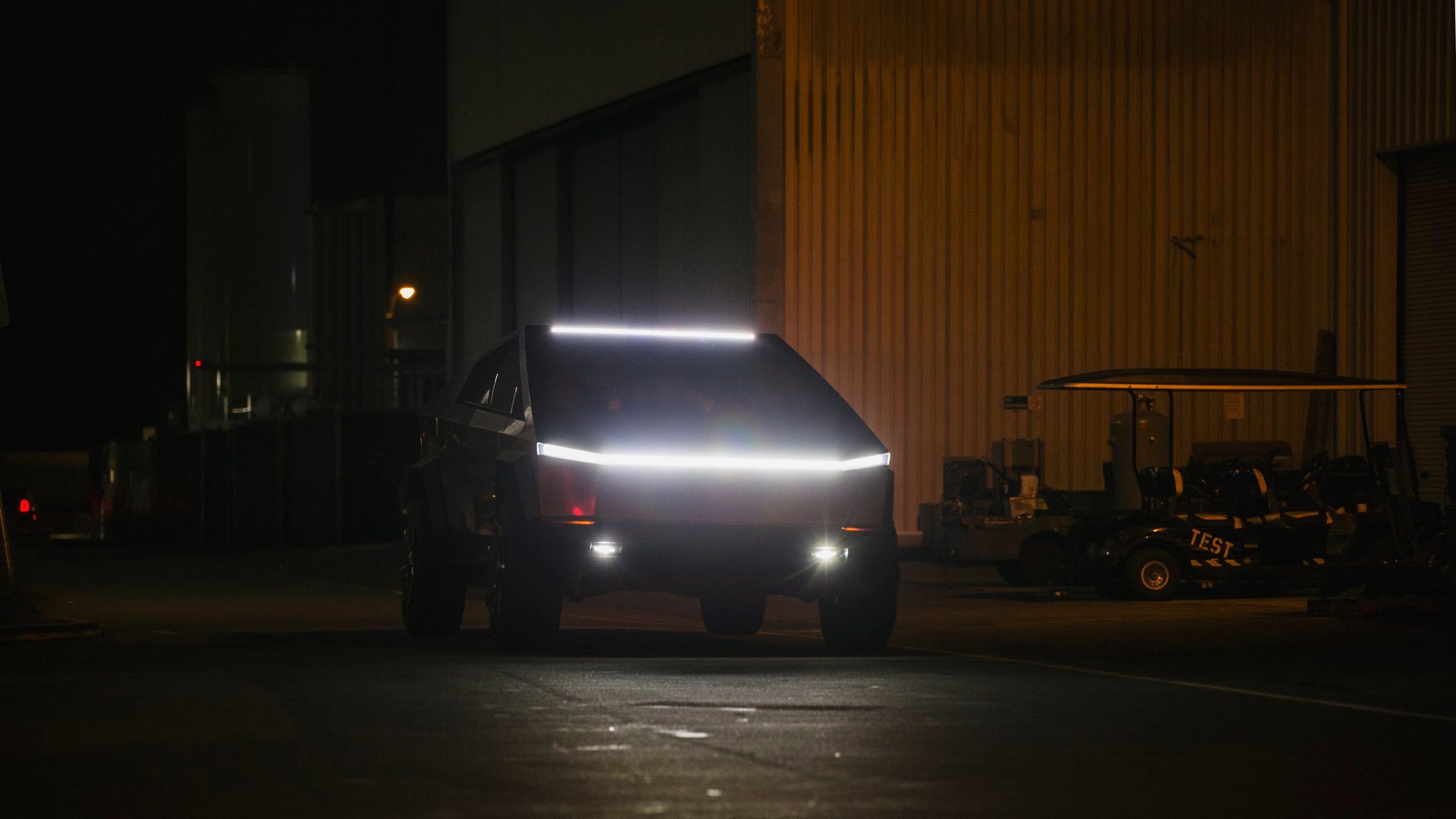
Tesla has revealed its Cybertruck light bar installation fix after a recall exposed a serious issue with the accessory.
Tesla and the National Highway Traffic Safety Administration (NHTSA) initiated a recall of 6,197 Cybertrucks back in October to resolve an issue with the Cybertruck light bar accessory. It was an issue with the adhesive that was provided by a Romanian company called Hella Romania S.R.L.
Tesla recalls 6,197 Cybertrucks for light bar adhesive issue
The issue was with the primer quality, as the recall report from the NHTSA had stated the light bar had “inadvertently attached to the windshield using the incorrect surface primer.”
Instead of trying to adhere the light bar to the Cybertruck with an adhesive, Tesla is now going to attach it with a bracketing system, which will physically mount it to the vehicle instead of relying on adhesive strips or glue.
Tesla outlines this in its new Service Bulletin, labeled SB-25-90-001, (spotted by Not a Tesla App) where it shows the light bar will be remounted more securely:
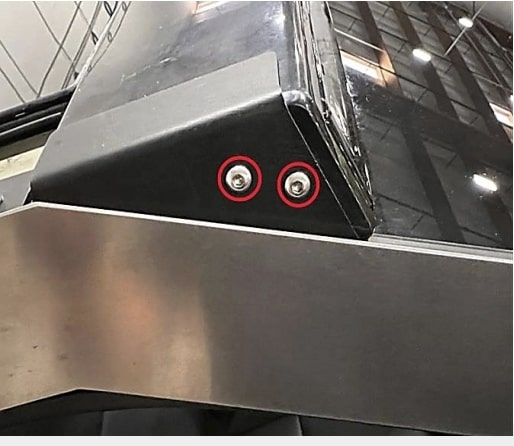
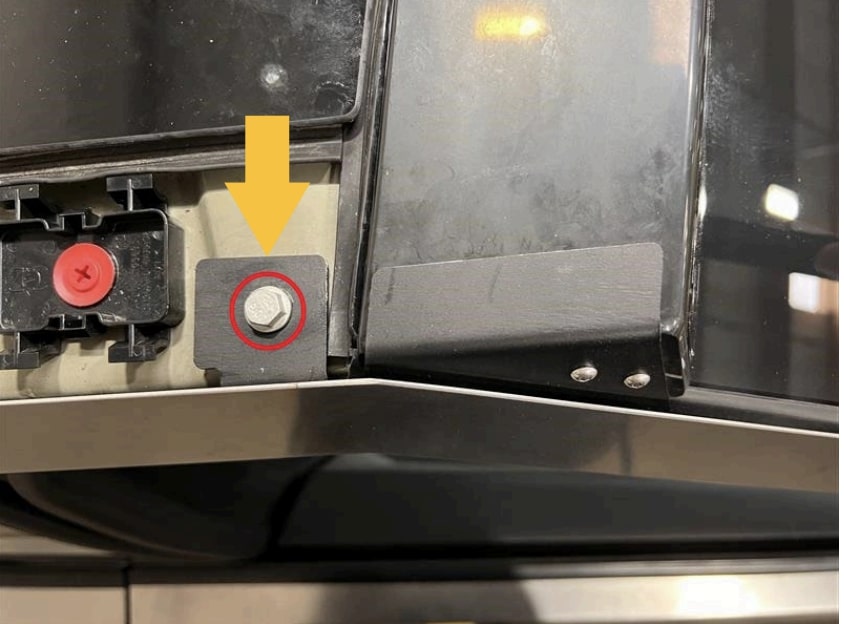
The entire process will take a few hours, but it can be completed by the Mobile Service techs, so if you have a Cybertruck that needs a light bar adjustment, it can be done without taking the vehicle to the Service Center for repair.
However, the repair will only happen if there is no delamination or damage present; then Tesla could “retrofit the service-installed optional off-road light bar accessory with a positive mechanical attachment.”
The company said it would repair the light bar at no charge to customers. The light bar issue was one that did not result in any accidents or injuries, according to the NHTSA’s report.
This was the third recall on Cybertruck this year, as one was highlighted in March for exterior trim panels detaching during operation. Another had to do with front parking lights being too bright, which was fixed with an Over-the-Air update last month.
News
Tesla is already expanding its Rental program aggressively
The program has already launched in a handful of locations, specifically, it has been confined to California for now. However, it does not seem like Tesla has any interest in keeping it restricted to the Golden State.
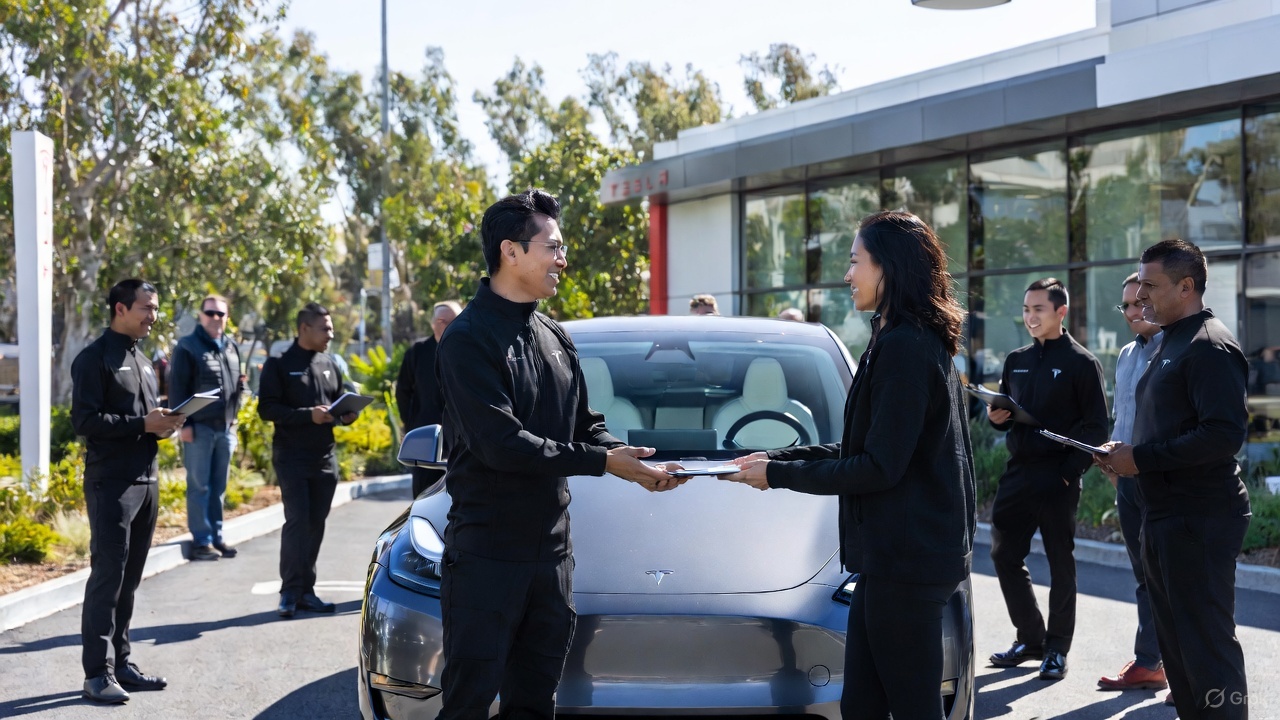
Tesla is looking to expand its Rental Program aggressively, just weeks after the program was first spotted on its Careers website.
Earlier this month, we reported on Tesla’s intention to launch a crazy new Rental program with cheap daily rates, which would give people in various locations the opportunity to borrow a vehicle in the company’s lineup with some outrageous perks.
Along with the cheap rates that start at about $60 per day, Tesla also provides free Full Self-Driving operation and free Supercharging for the duration of the rental. There are also no limits on mileage or charging, but the terms do not allow the renter to leave the state from which they are renting.
🚨🚨 If you look up details on the Tesla Rental program on Google, you’ll see a bunch of sites saying it’s because of decreasing demand 🤣 pic.twitter.com/WlSQrDJhMg
— TESLARATI (@Teslarati) November 10, 2025
The program has already launched in a handful of locations, specifically, it has been confined to California for now. However, it does not seem like Tesla has any interest in keeping it restricted to the Golden State.
Job postings from Tesla now show it is planning to launch the Rental program in at least three new states: Texas, Tennessee, and Massachusetts.
The jobs specifically are listed as a Rental Readiness Specialist, which lists the following job description:
“The Tesla Rental Program is looking for a Rental Readiness Specialist to work on one of the most progressive vehicle brands in the world. The Rental Readiness Specialist is a key contributor to the Tesla experience by coordinating the receipt of incoming new and used vehicle inventory. This position is responsible for fleet/lot management, movement of vehicles, vehicle readiness, rental invoicing, and customer hand-off. Candidates must have a high level of accountability, and personal satisfaction in doing a great job.”
It also says that those who take the position will have to charge and clean the cars, work with clients on scheduling pickups and drop-offs, and prepare the paperwork necessary to initiate the rental.
The establishment of a Rental program is big for Tesla because it not only gives people the opportunity to experience the vehicles, but it is also a new way to rent a car.
Just as the Tesla purchasing process is more streamlined and more efficient than the traditional car-buying experience, it seems this could be less painful and a new way to borrow a car for a trip instead of using your own.








